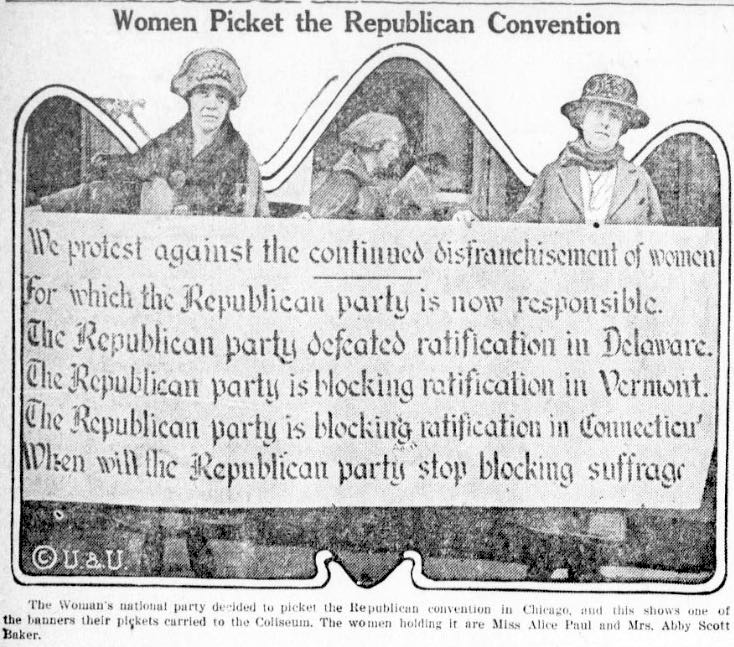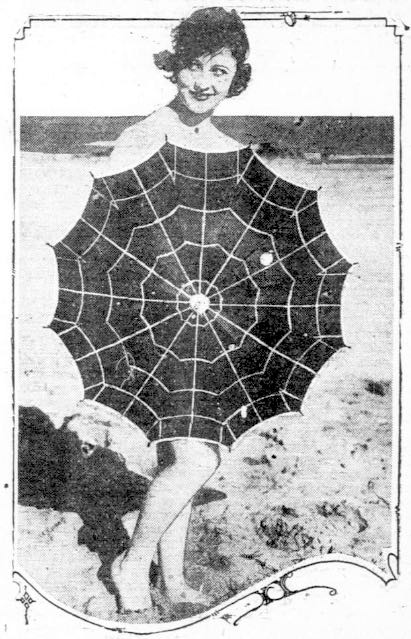
Women are intellectually inferior to men, vain, melancholic, morbid, and, we have to admit, a little bit nuts. We women might think we rule the roost, but as these learned gentlemen from the 19th and 20th centuries pointed out, it is all in our heads. Women do not have the mental capacity to take charge. We are weak and ultimately subservient to the awesome masculinity of the dominant male.
While times have changed and are continuing to change, it is always good to look into the past and examine the beliefs of our predecessors. It can be infuriating, but it is also a humorous dive into the ridiculous thinking of “primitive” man.

Not Blessed With Reasoning Power
It was 1894 and the United States was busily attacking anyone who drank absinthe. According to the belief of doctors, absinthe drinking led to criminal behavior and insanity. It was ranked as the most dangerous drug anyone could take, and was even believed to be more dangerous than opium.
The French were under heavy scrutiny, especially the women, for their absinthe habit and it was remarked that “women seem to have a special taste for all these medicated drinks.” Unlike the men who drank their absinthe with water and sugar, the women drank the green demon neat. The reasoning for this was quite simple. Women “have not been blessed with too much reasoning power.”
There was also the matter of the corset, and by one man’s logic, women drank absinthe straight because their corsets did not leave them with enough room to add water and sugar to the mix: “They want the absinthe taste and its effect. They also want their corsets. When a woman wants two things, she does not give up either.” [SOURCE 1]
Competition Will Cause Insanity
Just as more women were starting to attend college and enjoy some of the activities their male counterparts took for granted, Professor Immer decided to chime in his two-cent downer. According to the “leading specialist in mental diseases” in Berlin, 1902, women cannot handle anything of a competitive nature. In fact, if a woman were to compete against a man, she would more than likely become insane.
With women mingling more openly with the male population, the professor believed that there would be a “tremendous increase of insanity among women.” For example, his research showed that female teachers were far more likely to become insane than male teachers.
It would be best for all concerned if women returned to their homes, gave up on their education, and settled into a routine of having babies. After all, having a house full of screaming children is far less stressful for women than competing in the workforce. [SOURCE 2]
Lack Originality
Men of the past believed that women lacked in the mental department to such a large extent that it was a wonder men did not find a way to procreate with each other rather than troubling the lowly female.
Dr. Simon Baruch, a New York doctor who spent fifty years studying the differences in health and disease between men and women, publicly announced in 1914 that women had no originality. According to him, “The absence of originality and initiative in the woman’s brain cells is no fault of hers: it is the defect of her germ plasm, and she elicits our admiration for having accomplished so much with this biological handicap.” Originality was clearly a masculine quality.
This was not the last time women were told they lacked in the originality department. In 1935, newspapers across Australia announced that women had “slightly superior intelligence and wisdom to men.” However, the report went on to say that women lacked creativity and had an “inferior imagination.” [SOURCES 3, 4]
Only Good For The Nursery And Factories
A 1926 newspaper article explained that everything a woman can do, a man can do even better. Men exceed women in dressmaking, cooking, needlework, and teaching the young. There was, however, only one place where a woman could outperform a man, and that was in the nursery because “in the nursery she still reigns supreme, and, unless she should voluntarily dethrone herself, there she will remain so long as the world lasts.”
While it is nice to think that women are good for at least one thing in this world, too much mothering was considered bad because “a youth left to the sole guidance of his mother will… go utterly to the bad.”
Of course, if a woman was going to work outside the home, she was best suited for factory work because it did not “require sustained accuracy or physical strength.” Her work also came at a cheaper price, making her suitable for the factory owners. [SOURCE 5]
Their Fat Holds Them Up
London men were in a serious funk in 1913 when it was realized that sometimes women were better swimmers than men. There had to be a reason why “women of apparently inferior physique should swim so much better than many men of muscle.”
Professor J. H. Shea believed the reason why women outperformed men in swimming was that they had a good amount of leg fat. Also, he believed that men’s muscles knotted up in the cold water, allowing fattier women to excel.
Professor Sundstrum also recognized the “great buoyancy of women in the water,” and said it gave women an advantage over the men. However, men remained their superior in endurance swimming because of body strength.
Dr. David D. Scannell discussed the conundrum with his colleagues and admits that they are all perplexed by women’s ability to swim better than men. They could only guess that men’s muscles became cramped in the cold water to that fat-layered women could surpass them.
At no point was skill or practice associated with the women who were outdoing the men. [SOURCE 6]

Too Weak For Surf Events
In spite of women sometimes beating men in swimming events, the N.S.W. Surf Life Saving Association was against women competing in its events in 1953. The reason was because the “association feels that women are not strong enough physically to carry a heavy belt and line or to swim competitively in surf races.” Furthermore, women in the event would not only endanger their lives, but the lives of other competitors.
To add further insult, the association also banned its club officials from taking part in any surf events that included women. Officials who were found guilty of participating in such unfavorable events would be disqualified from any further involvement in the association. There reasoning was that the “association is primarily a lifesaving movement and does not favor women taking part in any form of surf competition.”
Surf Life Saving in New South Wales is still in operation and has evolved to allow women within its ranks and competitions. [SOURCE 7]
Too Distracting
It was a huge win for women’s equal rights in Australia, 1935, when it was decided that men and women in the Civil Service could finally work together in the same room.
Previous to the decision, a strict rule was in place preventing interaction in the work environment. Men and women were not allowed in the same corridor together. Partitions were built into rooms that prevented them from seeing each other. In one extreme case, the first woman typist to work for the Board of Agriculture was placed in the basement. No man was allowed to see her unless he received a special permit from the head of the department. Even having a woman working in a civil building was considered a “daring experiment.”
The Postmaster General at the time of the new ruling believed that the “artificial protection” of women in the workforce needed to end. The partitions came down and women were allowed to work side by side with the men.
Not all men were happy about this new ruling. Some claimed that the “close proximity of women will have a distracting influence on them and interfere with their work.” [SOURCE 8]
Oh Ye Of Little Brains
When it was discovered that women had smaller brains than men, the speculation mill began to roll. Male doctors and specialists all had their theories, but Dr. Roese of Berlin, 1907, summed up the general beliefs of the time perfectly.
The good doctor believed that women reached their intellectual peak while they were still young. Girls were often far more mature than boys their same age and so the girls’ brains development stopped. Meanwhile, it took longer for men to acquire maturity and were able to continue developing their brains and their intelligence for much longer than women. By the time the man stops his brain development and growth, “he has far surpassed the level to which the girl attained.”
But women need not despair. According to Dr. Roese, “the difference in the sexes is due to the fact that the principal duty of woman is motherhood, and nature cannot afford to waste on her… mental powers which are not essential to that function.” [SOURCE 9]
Over Stimulated Brains
Sir William Arbuthnot Lane, a “celebrated surgeon,” wrote in the French-British Medical Review, 1925, that the “vast majority of women are puny and insignificant. Their brains are over-stimulated by so-called education…” Civilized women are, according to Sir WIlliam, the “primary factor in the development of cancer” because they are poor mothers who have wandered off from their home duties to seek education and employment.
In all honesty, women were not the only ones being over-stimulated in the brain. An article published in a Brisbane newspaper, 1937, took a stand against free education in general. The author believed that intelligence was only held by a minority of people and, for everyone else, education was a waste of time that turned men and women away from general labor jobs. In fact, too much education made the general populace dangerous and lazy. [SOURCES 10, 11]
Most Certainly Inferior To Men
After all is said and done, are women inferior to men? It has been a question asked thousands of times and, depending on who was writing the response, men were almost always placed at the top of the intellectual totem.
In 1933, it was claimed that women are inferior to men because there are more men than women listed in the Who’s Who directories. This was true all across Europe, with the proportion of prominence being roughly thirty men to one woman. The only country where women seemed to be gaining some sort of intellectual advancement was in the United States where the proportions of prominence were seven men to one woman. In other words, women were still inferior to men because they did not have as many listings in the Who’s Who books.
Again, in 1951, women were declared inferior to men. This time it was a group of English scientists making the declaration. Dr. Olaf Astrand went on to say that, “Women are definitely inferior to men. So inferior that woman, at her highest capacity, hardly reaches the level of man at his lowest.” [SOURCE 12, 13]

